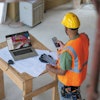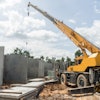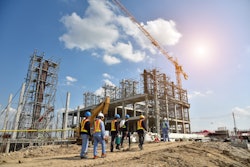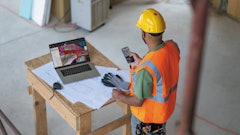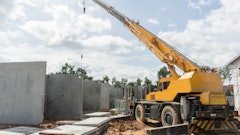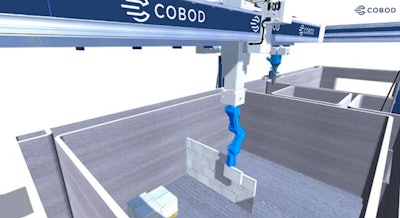
COBOD International, in partnership with Technische Universität Braunschweig, has introduced what is being called the first commercially available multifunctional construction robot. Built on COBOD’s existing BOD2 3D printing platform, the new system adds a robotic arm and telescopic vertical extension, expanding its capabilities beyond wall printing.
The new system enables Shotcrete 3D Printing Process (SC3DP), which is commonly used for constructing complex concrete structures such as tunnels, pools and retaining walls. The robotic arm can also be equipped with various tools — such as sanding attachments, insulation sprayers, and grippers — turning the printer into a multifunctional robot capable of handling diverse on-site tasks.
Robotic Fabrication of Complex Structures
TU Braunschweig plans to use the robot for fabricating reinforced concrete structures with high surface quality and complex geometries. In this process, reinforcement can be inserted after the concrete is applied or shotcreted around prefabricated reinforcement meshes. The robotic arm’s range and precision enable real-time fabrication of double-curved walls and other non-standard forms.
Additional tools, such as sanding devices, can be added to the robotic arm to enhance surface finishing. With a 3-meter vertical range, the arm can manipulate or modify structures well below its axis, offering flexibility for varied construction scenarios.
From Concrete Printing to Modular Construction Tasks
The modular design allows users to swap in tools beyond shotcrete application, including paint sprayers and grippers. This opens the door to automating tasks like mounting prefabricated components such as bricks or aerated concrete blocks — functions not typically associated with 3D printing systems.
This advancement was demonstrated during the opening of the Digital Construction Site at TU Braunschweig, an initiative designed to test digital and sustainable building methods under real-world conditions. The event highlighted growing interest from Germany’s construction innovation sector in robotics and automation.
Testing in Real Construction Environments
The system will now be used in live building projects to collect data and evaluate its performance under actual site conditions. Researchers will study how automated systems like this influence productivity, planning, and sustainability.
The launch is part of a broader research project — The Digital Construction Site: Industry 4.0 for a Sustainable Construction Sector — led by TU Braunschweig’s Institute for Structural Design (ITE) alongside departments in geodesy, materials science and construction engineering. The project aims to develop new frameworks for cost-effective, adaptable construction through digital tools.
Toward Hybrid, Adaptive Building Methods
Project collaborators see the robot as a step toward hybrid and multi-material construction methods, where different processes and materials can be deployed precisely where they’re most effective. The system’s ability to adapt and switch between tasks reflects a growing trend toward customizable, data-driven construction workflows.
Field tests over the coming months are expected to offer insight into how multifunctional robotics can reduce waste, improve precision, and streamline project timelines — key goals in the shift toward smarter, more sustainable construction practices.

